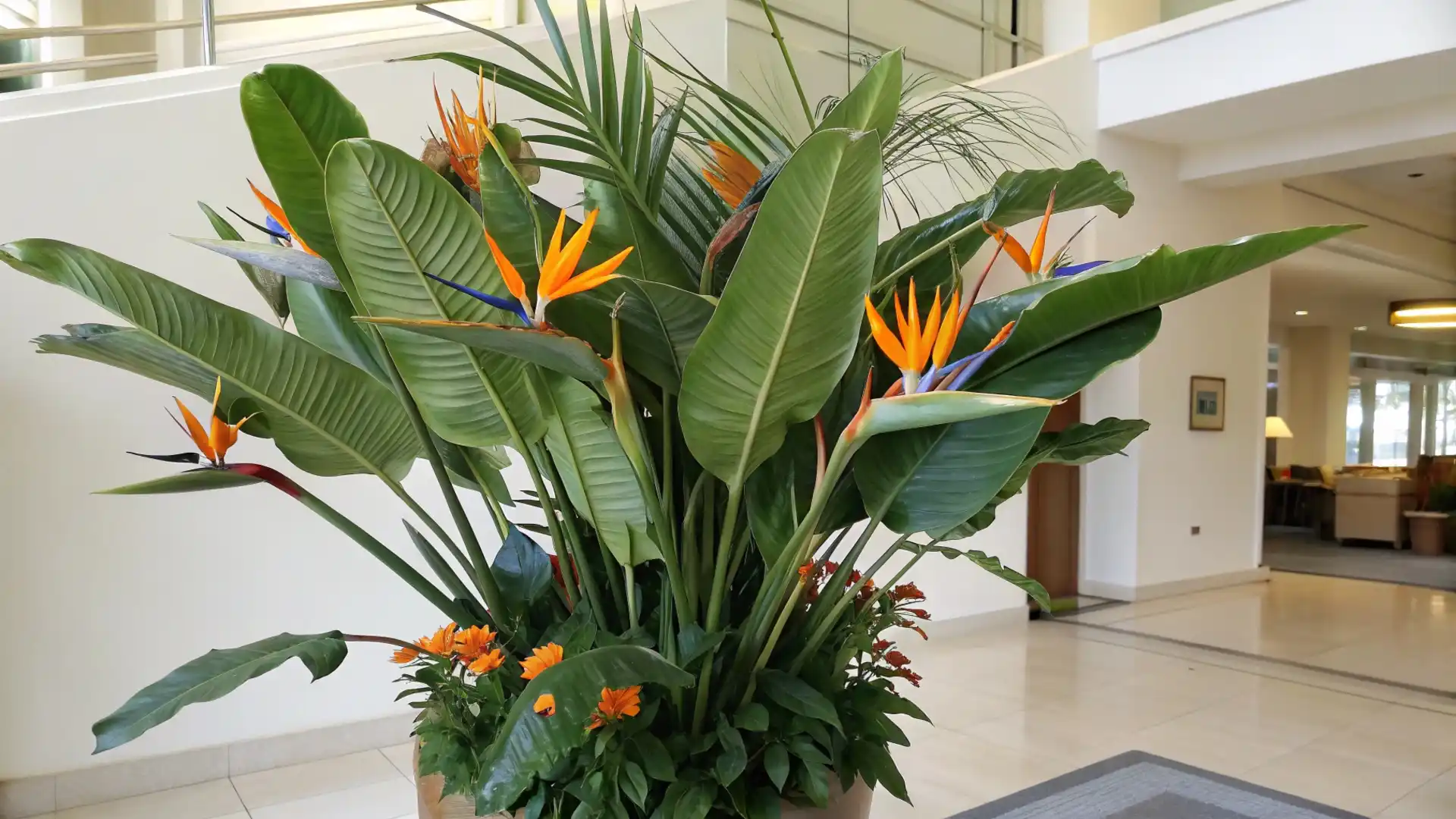Large Indoor Plants- Tall, Green, and Handsome!
Large indoor plants are rising in the charts of popularity today, and this is justified. Any space can be transformed into an aesthetically dignified area with the sheer presence of these handsome greens. With them, nature comes indoors and helps purify the air we breathe. These striking green ambassadors make a statement in both your living areas and office zones. Moreover, their attractiveness often tempts people to pick the first one encountered at the garden center. But it is not the right move. One has to consider the sunlight, humidity, and regular upkeep procedures before selecting the right ones.
All these questions floating in your mind will be covered by answers in this post about large indoor plants. You will get to understand how to choose the right plants for your indoors, and their maintenance in this article. Let us explore the tips step-by-step on how to help them thrive in your living space.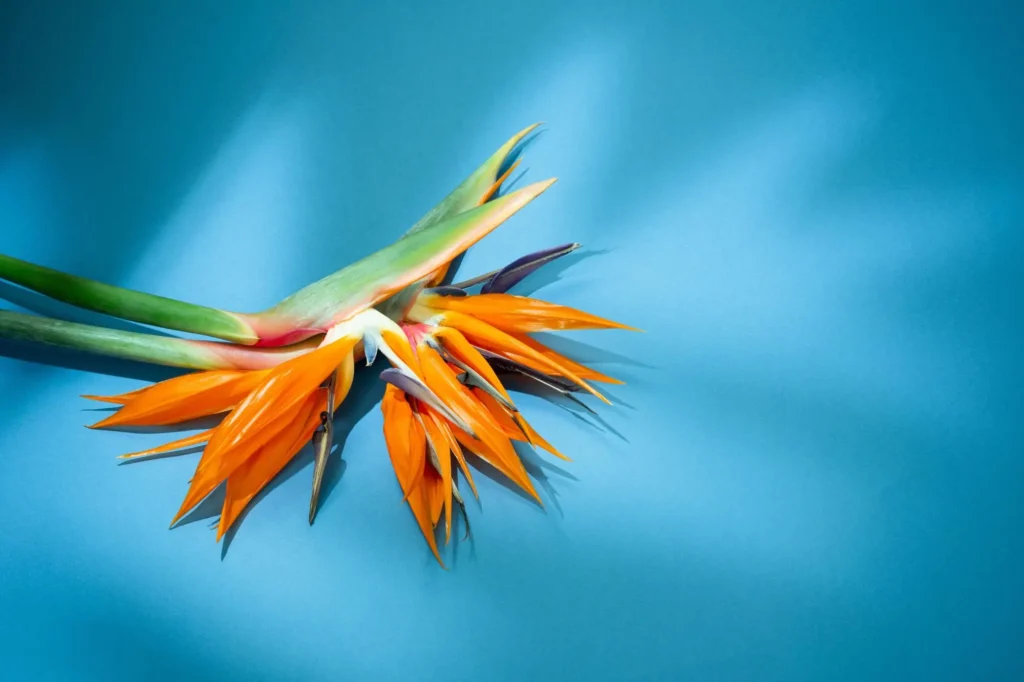
Large Indoor Plants: Why Do They Matter?
Usually, plant lovers and interior designers concentrate on small varieties like desktop ferns. However, large indoor plants have their distinctive appeal and aesthetic charm. Additionally, tall, green, and handsome, they can dramatically change the ambiance. Furthermore, they can also fill empty corners or bare walls with natural beauty, essentially serving as living sculptures. Moreover, they are also known as budget-friendly art pieces that can replace conventional artwork and decorative furniture with their imposing beauty.
Similarly, they filter toxins from the air and bring up humidity which is good for our well-being. Consequently, with their imposing presence, they bring about an aura of calming effect, reducing stress. Therefore, the balance of large indoor plants creates with creative charm and well-being, making them a much better alternative than smaller decor items.Large Indoor Plants: Harmonious Play of Aesthetics and Well-Being
Close your eyes and imagine a little tower of a Fiddle Leaf Fig soaking in sun rays coming through a window. Does not it gently force you to look upwards and aesthetically make the space look larger? Add large indoor plants to your coveted space and watch it make a royal statement. If your home has high ceilings or open floor decor, large indoor plants bring a sense of balance to the ambiance.
Greenery has proven time and aging to improve concentration by lowering stress levels. Blood pressure comes into control by just gazing at plants as studies have shown. The humidity of interiors rises with these large indoor plants transpiring water into the air. An increase in humidity means benefits for your respiration and skin, especially during winter. These sculpturesque greens spread a sense of comfort, positivity, and well-being.
The Right Large Indoor Plant: Choosing it
Considering Light Requirements
- Bright, Direct Light: If you have large south- or west-facing windows with plenty of direct sunlight, options like Bird of Paradise or Yucca might flourish there.
- Bright, Indirect Light: Many large plants, including Monstera Deliciosa, prefer filtered or indirect sunlight. Sheer curtains can help diffuse strong rays.
- Medium to Low Light: Dracaena and a few types of Rubber Plants are the right choices for dimly lit homes. They are shade-tolerant, and grow lights can be employed to supplement available sunlight.
Temperature and Humidity
65°F and 80°F (18°C to 27°C) are the temperature requirements for most indoor greens.
Installing your large indoor plants close to heat vents or drafty windows in a Big No! The plants can stress out with abrupt temperature fluctuations. Humidity is a pivotal factor for their well-being as tropical varieties favor higher moisture in the air. If you feel your home is dry, place a tray with water and pebbles underneath the pots or you can employ a humidifier. This exercise will balance the atmosphere.Popular Large Indoor Plant Types
Fiddle Leaf Fig
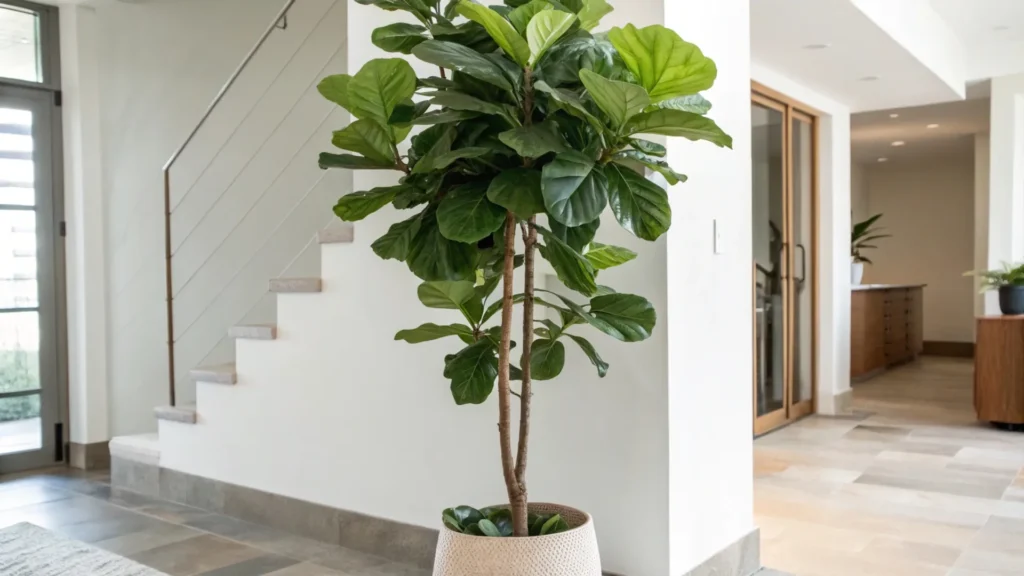
Looking After and Maintenance
- Light: Prefers bright, filtered sunlight. Requires balanced light to grow well. More direct sun can burn the leaves and too little light can result in leaf drop.
- Watering: Good drainage pots are important. It will need water when the topsoil feels dry, but overwatering can rot the roots.
- Humidity: Position them close to a humidifier, or spray-mist leaves occasionally. These plants love moderate to high humidity.
- Pruning: Remove damaged leaves regularly and prune from time to time to give shape to the plant.
Swiss Cheese Plant
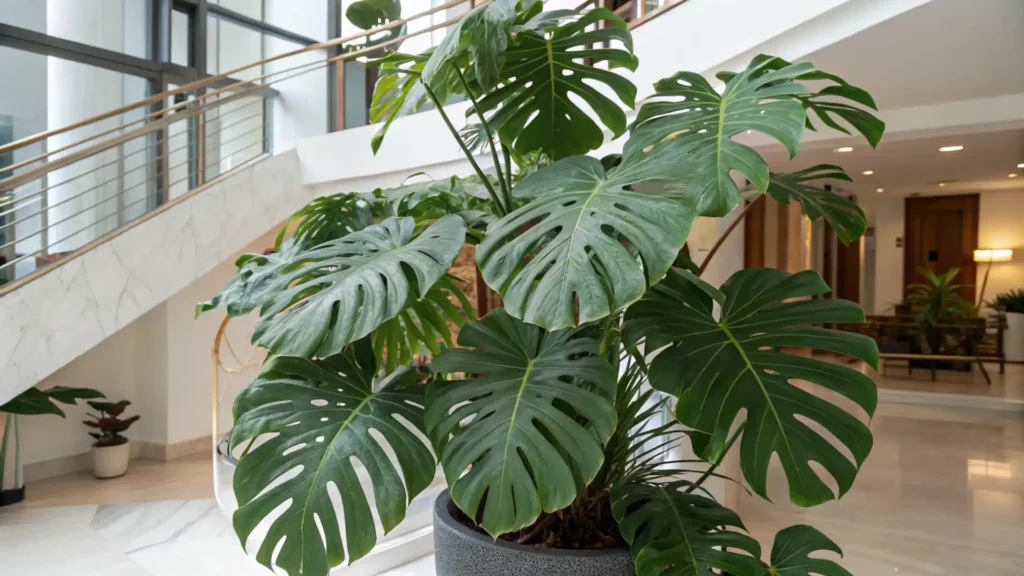
Looking After and Maintenance
- Light: Prefers bright, indirect light. Direct sun may cause leaf burn.
- Watering: Likes consistently moist soil but not soggy conditions. Water less frequently in cooler months.
- Humidity: Damp environments suit this humidity lover, and it thrives well in warm conditions.
- Support Frame: As it grows swiftly, a moss pole or trellis is needed for its support.
Bird of Paradise
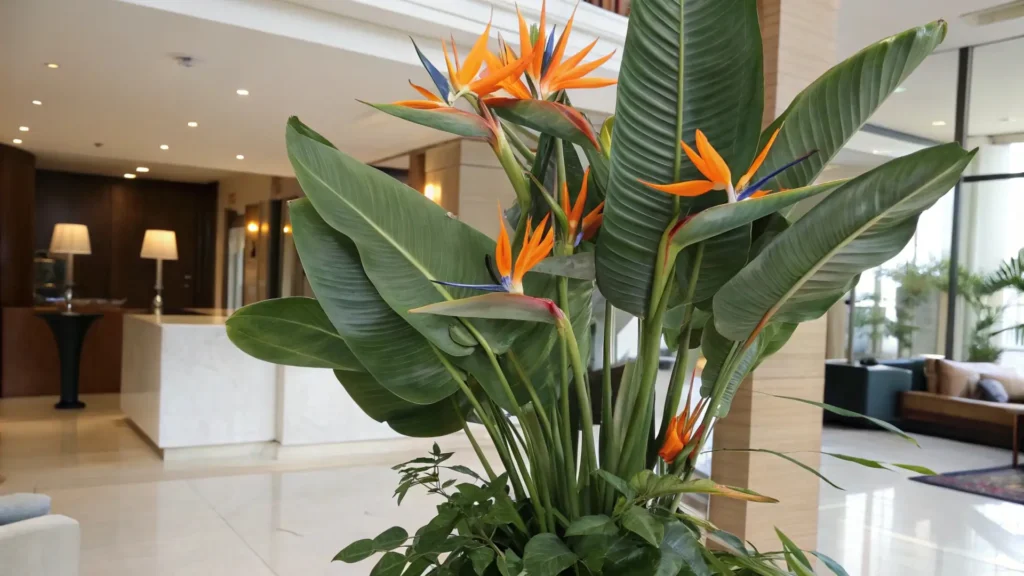
Looking After and Maintenance
- Light: Bright light is what they love and can also withstand a few hours of direct sunlight.
- Watering: Restart watering only when the topsoil is dry. Evenly moist soil is pivotal to its well-being in the growing season.
- Fertilizer: Summer and spring call for a balanced fertilizer.
- Spacing: Ensure it has room to spread; the leaves can get broad and tall.
Rubber Plant
Looking After and Maintenance
- Light: Indirect bright light suits them well. Some types can endure lower light levels.
- Watering: Too much moisture can be counterproductive to their growth. Watering only when the topsoil is marginally dry is ideal.
- Cleaning Foliage: Debris and dust on leaves block efficient photosynthesis. Keep leaves clean with a gentle wipe regularly.
- Pruning and Trimming: Regular pruning maintains a favored height of the plant, as it can grow very tall in an unruly manner.
Kentia Palm
Looking After and Maintenance
- Light: Bright partial shade or indirect light is good for them. Direct sunlight can scorch its fronds.
- Watering: Drought-resistant to some extent after establishment, but waterlogging can harm these palms. Lightly moist soil is ideal.
- Humidity: Like most palms, Kentia appreciates moderate humidity levels.
- Slow Growth: It grows remarkably tall eventually, but its growth is slow.
Madagascar Dragon Tree
Care and Maintenance
- Light: For vivid foliage growth, bright, low to medium light and indirect light are necessary.
- Watering: Too much watering will lead to root rot. Schedule watering sessions. Wait for the soil to dry before the next watering session.
- Temperature: Do not keep these indoor plants close to cooling vents, as exposure to cold drafts can be harmful. Temperatures under 60°F are the cut-off point; anything below it can harm the foliage.
- Pruning: Maintain a handsome, sleek trunk by clipping out yellowing leaves at the bottom.
Large Indoor Succulents and Cacti
- Light Requirements: Most succulents and cacti require plenty of direct sunlight. A south-facing window is ideal.
- Watering: The easiest way to kill a cactus is overwatering. Ensure first-rate drainage and water sparingly.
- Temperature: Warm temperatures make these plants smile (only if you can see)! Best placed on the drier side, although they are known to be resistant to cold climates.
Large Indoor Plants: Potting and Repotting
Best Soil Mixes
- Efficient-Draining Soil Mix: Even though a garden-store-purchased houseplant mix delivers, if mixed with perlite or coarse sand, better drainage can be facilitated. Indoor plants are known to survive well in soil that holds a bit of moisture, but is well-draining.
- Succulents and Cacti: An expert-formulated mix with good drainage is suitable for succulents and cacti, particularly the large ones.
- Organic Solution: For efficient nutrition boost and balanced moisture levels, mixing the soil composition with compost or peat works wonders.
When to Repot
- Root Bound: You know it is time for a bigger pot when you spot roots poking out of drainage holes or coiling on the topsoil.
- Decrease in Growth: Reduced growth calls for action. It is time to repot as your plant is signalling you for a bigger pot.
- Timing: Late winter or early spring is the ideal time to re-pot as they are also the growing season.
Watering and Fertilizing of Large Indoor Plants
Signs of Overwatering
- Drooping or Yellow Leaves: You know you are overwatering when you spot wilting, drooping, and soggy leaves.
- Root Rot Odor: You know the roots are falling prey to rot when your nostrils can detect a musty, rotten smell.
- Fungus Gnats: If you find these tiny fly-like fungus gnats hovering in and around the plants, the reason is overly damp soil with excess moisture. Neither underwatering nor overwatering can be reversed. If doubts come calling, wait a day or two before watering again. Wait for the top inch or two of soil to dry out.
The Right Fertilizer
- Correct Fertilizing: Go for a quality fertilizer brand comprising of N-P-K ratio of 10-10-10.
- Slow-Release Approach: A steady supply of rich nutrients can be administered by adding the potting soil with granular fertilizers that are slow-release by nature.
- Liquid Fertilizers: Fertilizers are formulated by Agro-Scientists. Therefore, always read the label carefully to follow instructions to dilute accordingly. Every 4–6 weeks during the growing season is the ideal application.
Pruning, Grooming, and Support
Healthy Growth Techniques
- Tip Pinching: Pinching the growing tips of the plant fosters healthy branching, especially in Fiddle Leaf Figs.
- Dead or Yellow Leaves Removal: Yellowing foliage can signal diseases. Trim and cut them off as soon as you spot them.
- Shaping: Rotate the pot every few days or weekly if you notice erratic growth or if the plant is leaning to one side.
Staking and Structural Support
Prevention and Control of Pests
- Inspection: Pests are often found on the underside of leaves. Monitor closely to remove them promptly.
- Isolation: If a plant is affected by a disease outbreak, isolate it from other plants to prevent the spread.
- Treatment: In greenhouses, introduce beneficial insects. For regular practice, use neem oil sprays or insecticidal soaps.
- Cleaning: Gently wipe leaves with a damp cloth to remove dust and any pests on the surfaces.
Large Indoor Plants in Your Home: Styling Them
Placement Ideas
- Corners and Hallways: An empty corner can feel complete with a tall green plant.
- Groupies: For a lux-lush, layered Klee effect, various plants of unequal heights can be clubbed together.
- Focal Points: A beautiful plant next to a seating zone or a window can have a sculptural effect.
Using Plant Stands
Pets and Children: Safety Considerations
- Research Toxicity: The sap of a few Dracaena species and Fiddle Leaf Fig can cause skin irritation. If consumed by accident, parts of Rubber Plants can be mildly toxic.
- Proper Placement: Potentially harmful species should be placed out of reach. If pets and children are part of the household, choose non-toxic varieties like Kentia Palm or certain ferns.
- Pet Training: Train pets not to gnaw on leaves. Pet owners use bitter sprays or distractions like cat grass to redirect a cat’s habits.
Environmental Benefits of Large Indoor Plants
Much beyond their visual charm, large indoor plants are environmentally advantageous. Photosynthesis is a game-changer. Even children know, plants release oxygen into the air and into our lives. Planting them indoors answers why we should have them indoors. According to studies, Dracaena and Rubber Plants have the efficacy to eradicate pollutants like formaldehyde and benzene from the air.
Add this to their quality to regulate indoor humidity levels. Moisture is sent to the air through transpiration and benefits us in dry seasons. With large plants adorning your living space, you are developing microclimates. An ecosystem with fresher air, balanced humidity, and potential improved respiratory relief.Common Challenges
Prompt corrective measures are pivotal to rein in issues. Experienced gardeners also face multiple challenges in managing large indoor plants.
- Leggy Growth: Inadequate light can be a major reason. Reinstall the plant near a window with sufficient light coming in or use a grow light to supplement the deficiency.
- Leaf Drop: Occasional leaf drop is natural. Sudden or abnormal amounts of drops may point to stress from overwatering or temperature fluctuations.
- Brown Leaf Tips: Wayward watering schedule or low diminishing humidity can be the cause. The solution lies in using a mist-spray or a humidifier.
- Root Rot: Excessive moisture is the main culprit. Repot the plant in fresh soil and trim any damaged roots once you spot them.
Summary
Welcome Mother Nature into your living space. Bring in large indoor plants. Create your oasis with a vivid Bird of Paradise or the stellar Fiddle Leaf Fig. Experience serenity and peace indoors. The large indoor plants need attention like your kids. The right lighting, proper watering methods, balanced humidity levels, love, and care will help your family enjoy their numerous benefits.
On reading this article, you can select a large indoor plant that will naturally jazz up the ambiance but supply you with purified air. Regardless of whether you are a rookie or an experienced plant aficionado, these majestic indoor companions will charm you every moment. Soak in the natural benefits you enjoy, along with their stunning presence, elevating your space by ushering in Mother Nature.
